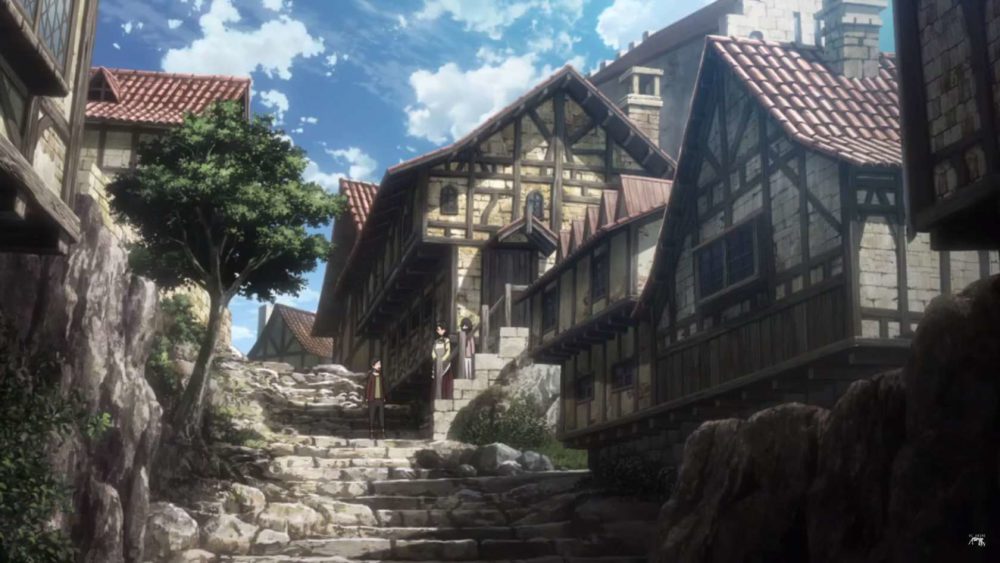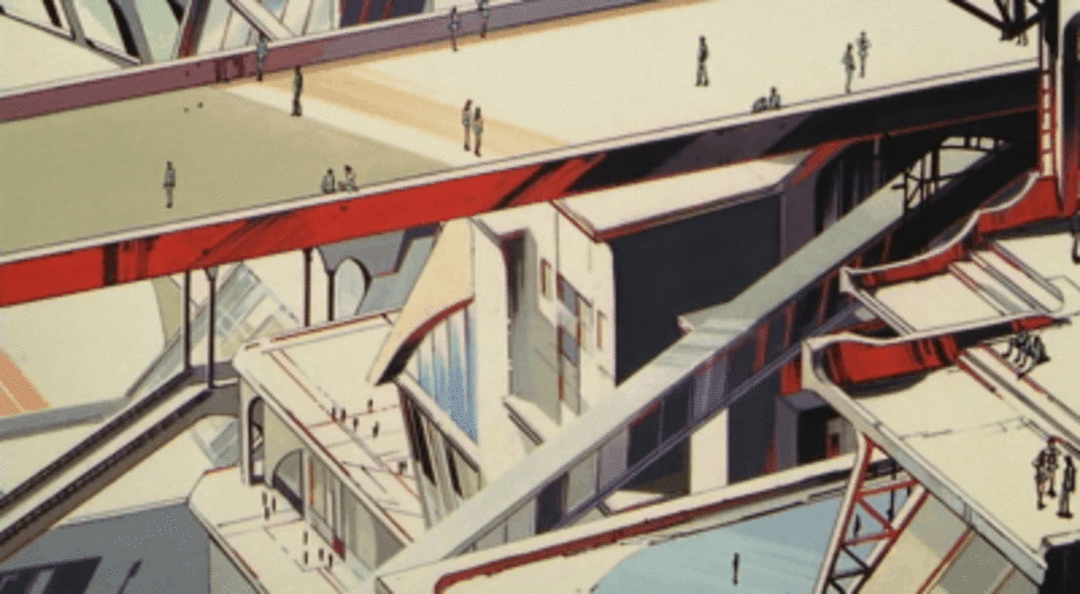
I believe one of the most important aspects of storytelling is knowing how to use setting. The location is where our stories unfold, which means it’s important to see how they affect and are affected by the characters who interact in them. A great way to define the atmosphere of a setting is through architecture.
Now, architecture includes a wide array of topics to study, from understanding the origins of Baroque to the rise and fall of Art Deco. But in film and anime, all that information and history behind a building’s design can be simplified into a single frame. That in itself is an element of storytelling. So how does architecture help tell a story?
The first way is, of course, to differentiate between locations. When an anime takes place in multiple locations, it’s important for the audience to know the difference between each spot. If you’re moving from city to city, that’s usually easy. If the city is real, people normally recognize the architecture there. For example, London has the Tube and Westminster, while Tokyo has the Tokyo Tower and the Rainbow Bridge. But the real challenge is showing us different places in the same location. How do you make each spot unique?
In “Aria the Animation,” the show mainly takes place in Neo Venezia (Venice), and each spot in the city serves as a location for a different kind of story. St. Mark’s Square is vast, allowing Akari to meet new people and gather with large groups there, while the headquarters for Aria Company is small and secluded from the city, acting as Akari’s haven. Also, a lot of the buildings in Aria are white, which not only matches the uniforms of the undines but also reflects nicely against the blue sky and sea, creating a heavenly aesthetic.
This leads us to our second point: atmosphere. The location can range from an eerie, old rusting town to a glamorous, clean and modern city, and it’s the buildings in these places that define the setting’s overall atmosphere. Sure, if you want a dark and bleak environment, you could easily just apply a cool and depressing color palette. But in “Aku no Hana,” the wear and tear of the town buildings really serves to enhance the desolate feeling within it.
A more subtle version of this example can be seen in “Nagi no Asukara,” where pillars of an unfinished highway are shown as a motif throughout the show to display NagiAsu’s society at a standstill. This is something architecture is really good at: establishing a social and political status, without ever needing the characters to tell us up front. Just by how a city is designed, we can tell if the society is chaotic, totalitarian or, of course, dystopian.
Last is the relationship between architecture and character. Most anime keep it simple, giving the main character a single place to be emotionally attached to throughout the show, whether it be one building or an entire town. Normally, the way in which that location is designed is mirrored by the character’s personality.
However, most of my favorite examples come from one-off moments. Examples include the use of a large open space to suggest a character’s freedom or a character’s loneliness or enclosing an entire city to both protect and inhibit our characters. It’s also important to see how a bad display of architecture can negatively affect a show. For example, “Gangsta” tries to give its setting a bleak look. But instead the anonymous designs make the setting less dejected and more boring — especially when the characters get to do nothing with it..
But if you’re looking for a master at this stuff, then I have no one else better to recommend thanKunihiko Ikuhara.
Kunihiko Ikuhara is a visual genius, and his talents include a knowledgeable use of architecture. Everything I’ve said can be seen in each of his works, from using a landmark to designate a city to inhibiting the characters with enclosures.
Ikuhara is able to tell an entire story just through how he uses architecture.
Want to show the progression of a family arc? Then introduce them living together in a colorful shack and by the end of the series have the shack look like this. Just by seeing the before and after, nothing else has to be said for us to get a good idea of what’s happened.
The shack shows that the Takakuras are poor, as opposed to Masako’s baroque mansion that suggests she inherited old money. This in turn contrasts with Yuri’s modern condo, earned by new money. We can inherently gather all these details about the characters by just seeing where they live.
However, nothing else by Ikuhara shows more interesting uses of architecture than “Adolescence of Utena,” from the constantly moving school buildings, to old ruins to a massive castle with wheels.
Each use of a structure holds information that enhances Utena’s story, like Himemiya’s secluded rose garden or the staircases of the school acting as a labyrinth that entraps the students. We can look at the moment where Utena chases after Himemiya — with each cut, she ends up farther and farther away — and be able to understand the situation.
This film alone offers more study material than multiple shows put together when it comes to using the setting as a narrative. Ikuhara has already influenced a number of anime including “Ouran,” “Soul Eater,” “Lupin III” and “Maria Holic.”
What’s also interesting about his work is that he likes to use real locations as references: The school in “Yuri Kuma” is actually based off of a real-world library, and the hospital in “Penguindrum” is taken from a real building in Paris — the iconic Pompidou Center by Renzo Piano and Richard Rogers.
It’s in Ikuhara’s work where these real locations get altered to complement the story in interesting ways, because dialogue isn’t the only way you can tell a story. You can say just as much with something as simple as the design of a building. Once you know how this method works, you can begin to do interesting things with your settings.
It’s all a matter of who’s the architect.

